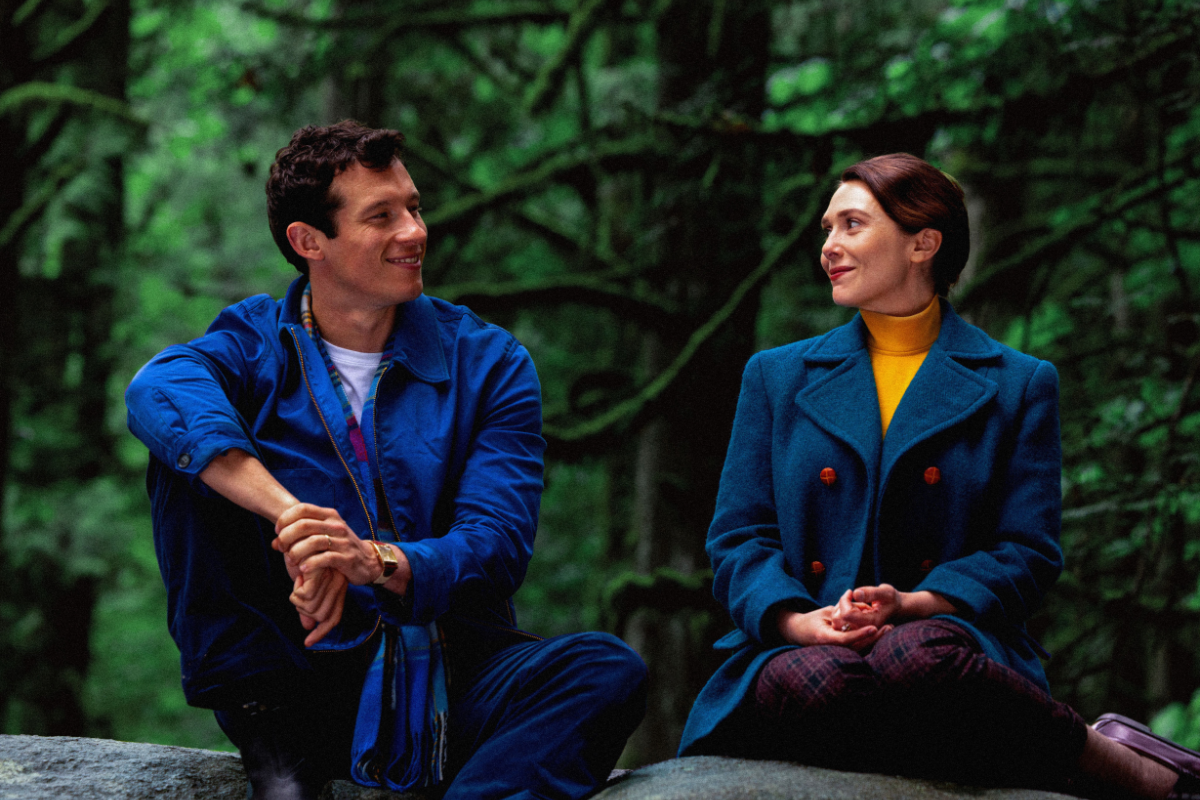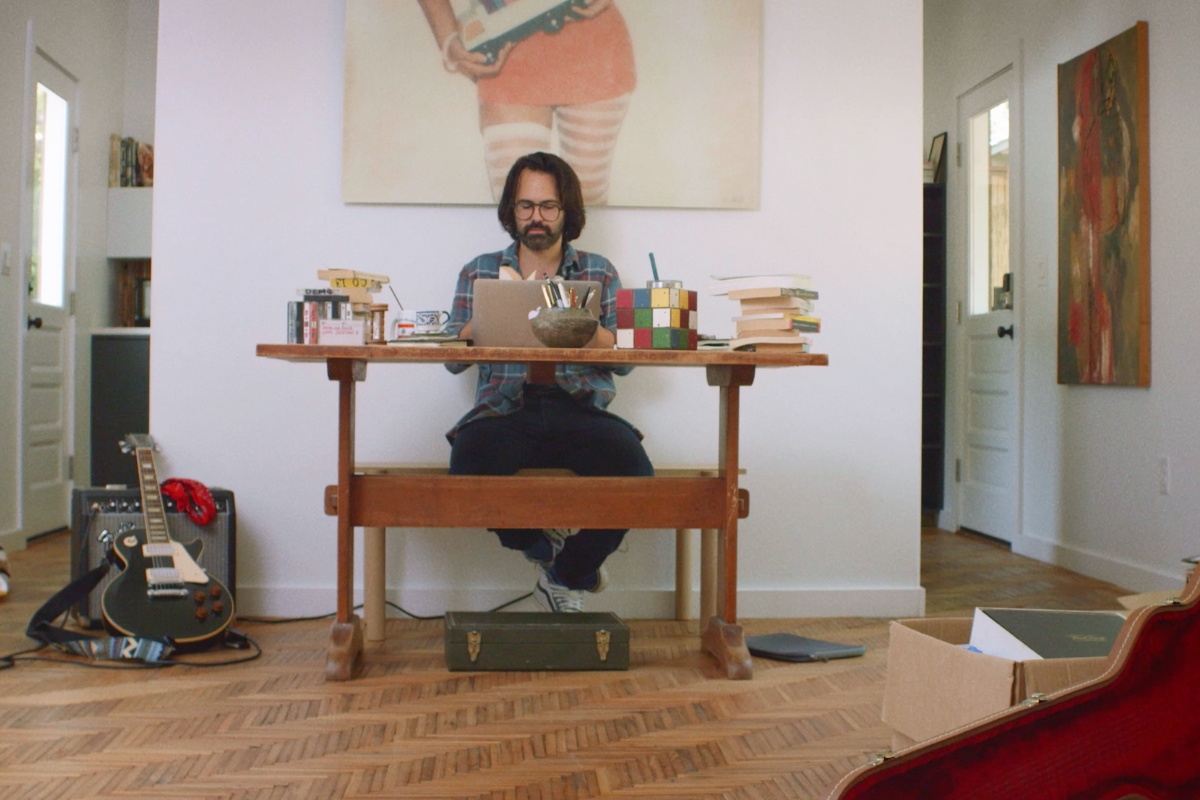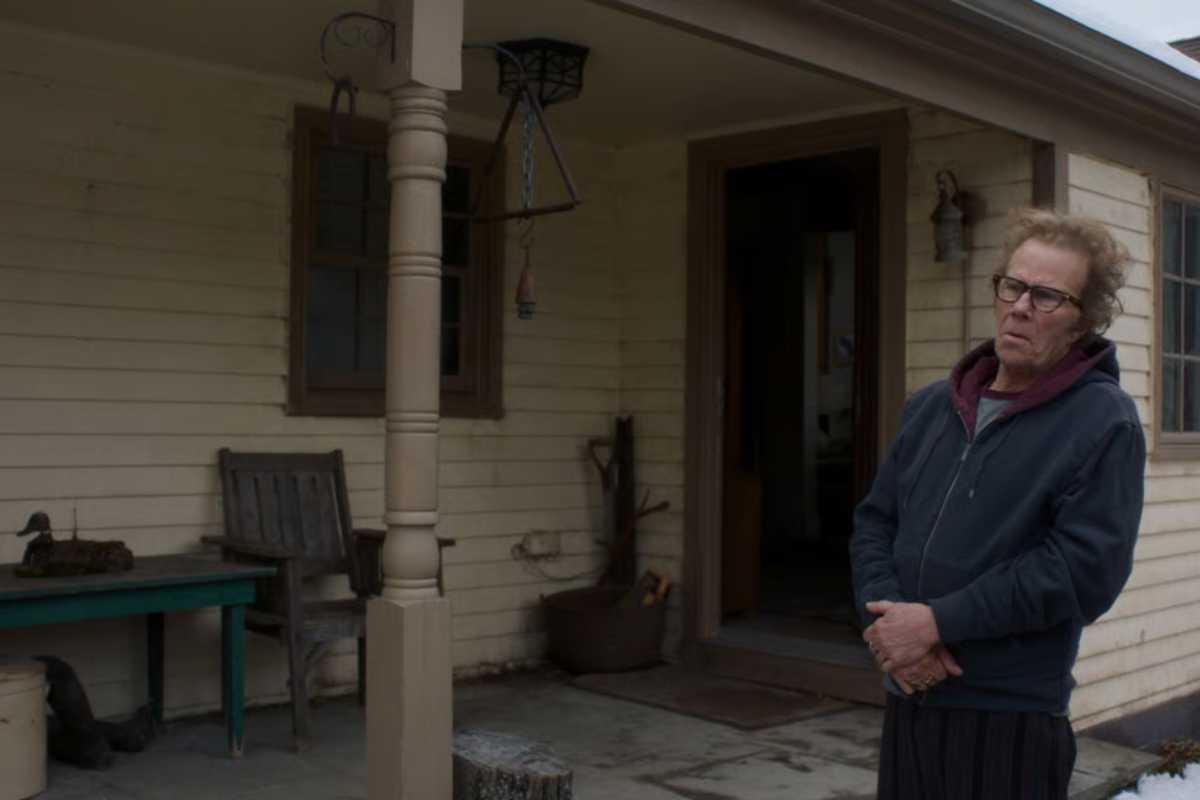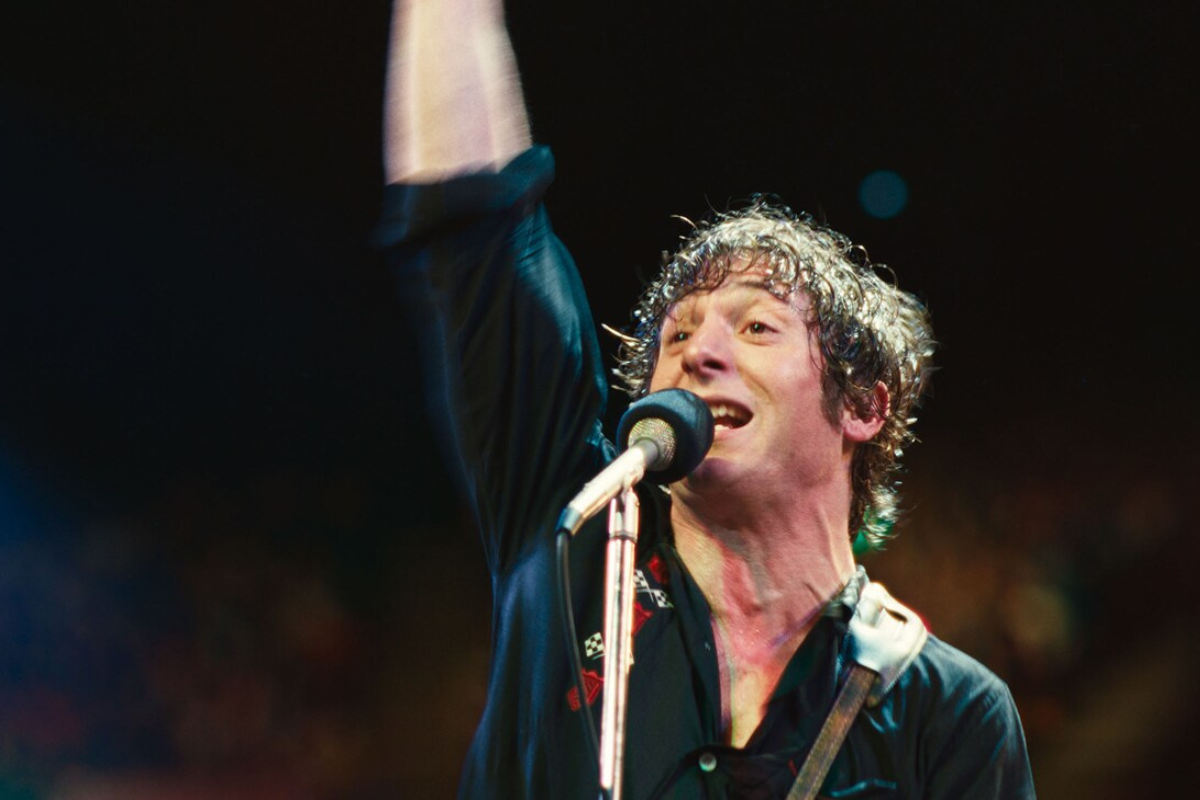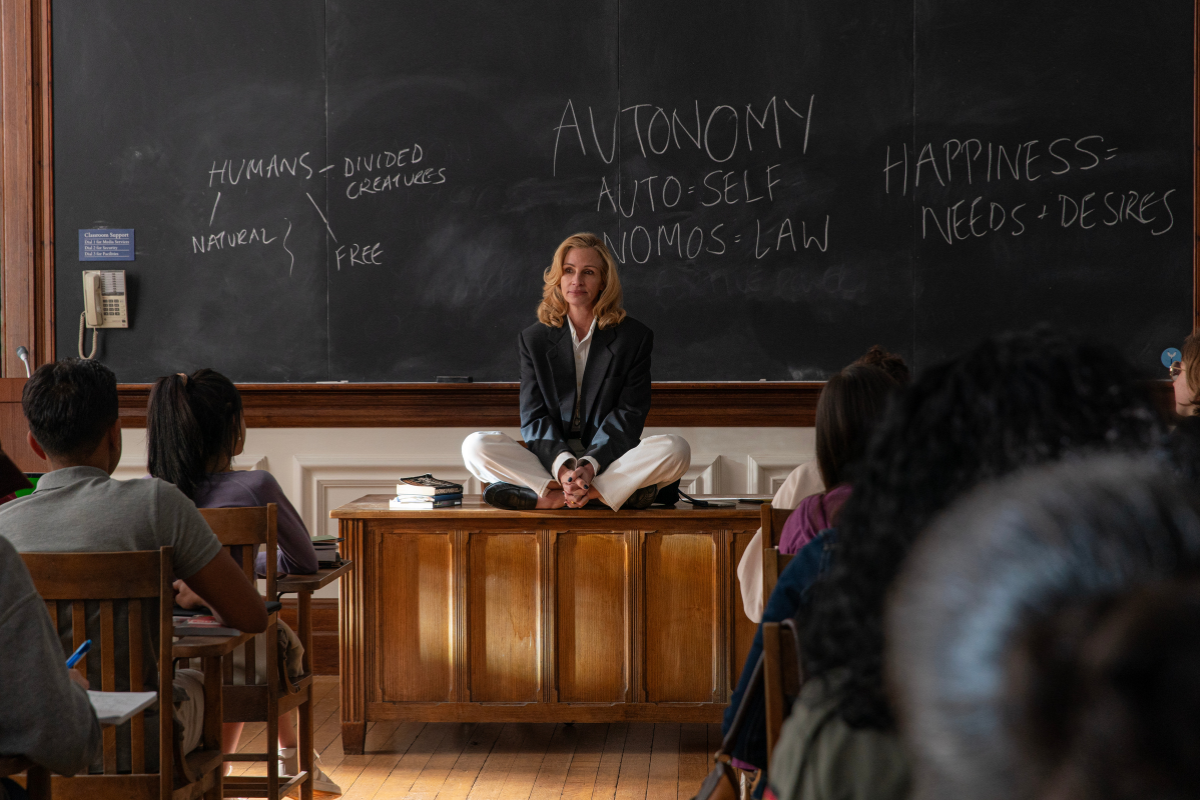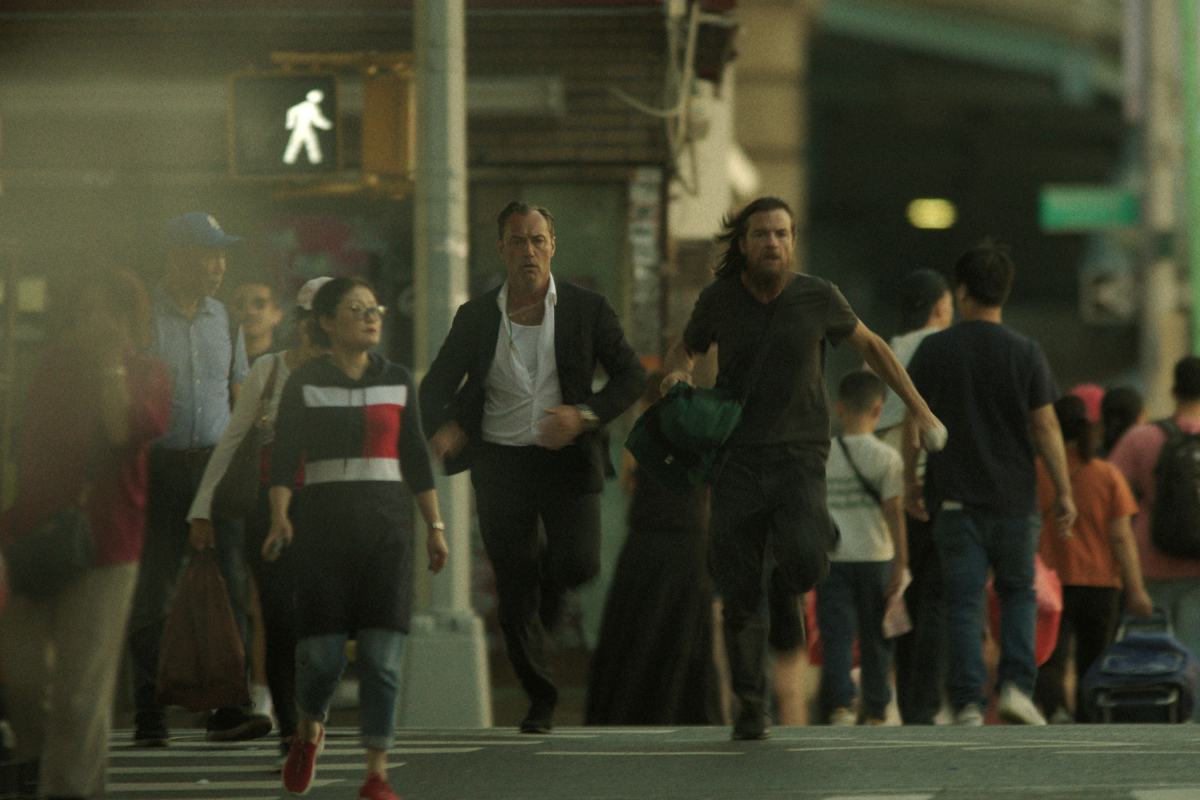Director Halina Reijn Unlocks the Beast Within A24’s ‘Bodies Bodies Bodies’
Winona Ryder, Tobey McGuire, and Tim Curry were all points of inspiration for this bloody social satire.
A24’s latest film Bodies Bodies Bodies is a wildly fun mix of equal parts satire and horror. It’s a psychological slasher-turned-case study that follows a group of wealthy 20-somethings as they decide to hunker down during a hurricane while subsisting on alcohol, drugs, and drama. All horror breaks loose for the partying Gen Z tribe (a stacked cast featuring Maria Bakalova, Amandla Stenberg, Rachel Sennott, Lee Pace, and Pete Davidson) when the storm cuts off all cellular and WiFi communications forcing the group to play a parlor game that turns deadly.
The themes of misguided love, death, and comedy are ingeniously helmed by Dutch Director Halina Reijn who used her unique upbringing in being a classically trained theater actress to lean on the film's dramatics.
“I approached [the movie with] realism, it’s like Lord of the Flies meets Mean Girls,” Reijn tells Script Magazine. “There’s violence, blood, and deaths but I’m just interested in these young people [who are] locked up in a house without WiFi. What do they do when faced with that scenario? Would they actually look at each other? You know, growing up with all these classical plays from Shakespeare to Chekhov, I just love the thought of who are we [when put in strenuous circumstances]. Are we civilized? Or are we animals? We think we are all smart and civilized and intellectual, but then something happens and we become these weird junkies.”
In this interview, Script Magazine talks to Reijn about close-ups, forbidden inspiration, working with the cast, and setting the stage for the perfect murder.
Reader be warned, there are spoilers ahead.
Critics and early audiences of the film are seemingly split about some of the themes in the movie. Is it a critique on the socially obsessed Gen Z or a cautionary tale about rich kids? How would you distill your own interpretation while reading the script yourself?
One of the biggest things we added to the film was the idea that the “beast” and “the killers” is not outside of you, but also inside of you. It’s not so much about a horror movie featuring a ghost or just a horror movie about a killer on the loose. It’s a study of group behavior, and that’s what I’m interested in. I can understand that for some people the movie will be a bit absurd to watch as the story takes place. But to me, I approached it as realism, it’s like Lord of the Flies meets Mean Girls. Of course, there's violence and blood and deaths, but I'm just interested in these young people in a locked up in a house without WiFi. What do they do when faced with that scenario? Would they actually look at each other and [learn how to be with one another?] They’re so distracted because they’re used to seeing everything on the screen. So this is a commentary on all of us, not just Gen Z, I feel we're all so addicted to our phones and the WiFi. You know, growing up with all these classical plays from Shakespeare to Chekhov, I just love the thought of who are we [when put in strenuous circumstances], are we civilized? Or are we animals? We think we are all smart and civilized and intellectual, but then something happens and we become these weird junkies, you know?
One of the recurring jokes throughout the movie is that Emma’s (Chase Sui Wonders) character is good at being melodramatic and acting like a victim because she got the titular role in a theater production of Hedda Gabler. And you’re originally a classically trained theater actress turned director who also played a role in Hedda Gabler, which I found funny, how much of that was intentional or pure coincidence in the script?
Sarah [DeLappe, screenwriter] and I edited this together and I think if I create something, whether it’s me on stage as an actress or me creating a film, I think the only way to [get myself in the right headspace for a movie] is to put my own pain or my little demons on screen so that all of those characters in the movie are, for me personally, versions of myself and all of those relationships are all drawn from moments of my own life and Sarah’s life. So, there’s a lot of things in the film that are private references for me and you just mix-it it up like a cocktail and throw it on the screen. There are many autobiographical things here.
Hopefully not too autobiographical since, you know, this is a murder mystery. But I did have a question about this being your first American feature, as your first film was Danish. Was there anything stylistically different between Danish and American - English filmmaking?
I’m from the Netherlands, which is a super small country in Europe and you have more access to government money to make art. So that’s very different because you don’t have the expectation to make the money back like you do here in the US. You basically get the money from the government and make the film and here every dollar that you’re spending gives you more responsibility because you have to think about you’re going to make that back. There’s a difference between unions as well, in my country because it’s so small it’s much more communal and less of a power structure. But it’s been really interesting for me to be part of this dynamic between the countries because in the Netherlands there’s only so many people to show a film to in a country that small. In the US, the population is huge so it’s like a world stage. I’ve learned so much.
I love this large isolated millionaire mansion that you use to stage this mystery slasher. You get tremendous mileage out of a single location. Was it all practical in that house or were there things filmed on set as well?
I took my DP [Director of Photography] Jasper Wolf from the Netherlands with me on this journey because we have a special way of working in a way that’s very European. It’s this handheld style that doesn’t hide very much. The actors have to be in the moment all the time because you never know if a director is going to suddenly point the camera at you, so that way the [filmmaking process] is less technical and more actual.
The first thing I said is that I’m not going to do anything artificial, so we needed to find a house that had all the locations that we needed. I wanted it to be as real as possible and a place where everyone could be together, including the technicians. I wanted someone that represented the idea of the American dream gone wrong, the symbol of narcissism, the symbol of right, and that house had an inside basketball court, it was so wild. We did scout a lot of houses, but when we got to this one it was perfect. It had been on sale for a very long time because it was crazy expensive and nobody wanted to buy it and there was some mold in it and it was already deteriorating. There were rats floating in the pool when we arrived, it was so horrifying. And of course, we cleaned it up completely and we made it look nice again, but it was an amazing location because we could use it like a theater. It was dark and decadent. We literally had every location in that building to create that atmosphere of the pressure cooker that the film actually is.
Speaking of darkness… being in the dark is both metaphorically and literally integral to the plot of the film. I’m guessing that filming in literal pitch black with minimal lighting in the way of Alice’s (Rachel Sennott’s) glow-in-the-dark bracelets or the characters’ cellphone flashlights was tricky. How did you tackle filming this way?
Yeah, this was one of the biggest challenges to crack beforehand. I was taught as a director that you have to prepare like a military sergeant and then you can let go in the moment. And we prepared for months and months and months. We just thought about them lighting each other with iPhones would be more realistic and then also give Rachel those bracelets and necklace so that she can be a source of light similar to a lighthouse. And it makes sense within the context of the film that she would dress herself up with these neon lights because of course they all know that this big hurricane is coming. So they have all these emergency lights on hand.
We wanted the shoot to be very real and didn’t want to work with artificial lighting at all which is also a whole other set of problems. Because then they’re already focusing on their acting and then they have to also light their own faces as they move and speak. I did wonder if they would be good at it and they totally were. They were so smart and loving towards each other and I think that’s what makes this film so special is that the darkness drew everyone closer together and but made this limitation a very creative solution.
In the movie you do some very serious up close and borderline unnerving close-up shots with what looks like a handheld camcorder… I mean damn, that was so anxiety-inducing!
Good! It was super instinctual to me to get up close and personal with the camera that way. The film is also kind of about two people falling in love when they shouldn't. It’s moody and dark. And because the film is also about young adults, it’s also sensuous and sexual, so I wanted [the camera] to be inside of that group [dynamic]. I didn’t want the film to feel like the audience is just watching this group from afar and that we are judging Gen Z, and being like, 'Oh that’s not about me.'
I started the film off with that really intense and passionate kiss and it’s really close and primal. Because again, to me, my whole statement with this film, even though I understand it's also just an entertaining roller coaster, the statement is we are beasts. And in the film, they react and start to eat each other [metaphorically] and turn on each other. And the camera movements to me had to be sort of sensuous and primal and animalistic.
What films did you draw inspiration from for this?
I like to watch Heathers and Clue. Bodies Bodies Bodies is sort of like a modern murder mystery version of Clue. But I also really like to watch Kids that movie about [chaotic] teens in New York and a movie called Don’s Plum which you can’t legally watch in the US, but it’s a film with Leonardo DiCaprio and Tobey McGuire when they were young and they just sit around in a cafe and talk and have sex in bathrooms and do drugs, it’s wonderful. But I think that’s why they tried to get rid of it, but these films were really a huge inspiration for me and this film.
Who was the most likely to get scared on set and who was more likely to laugh during a take?
I think we literally all were scared at certain moments on set. But Amandla was pretty calm while the rest of us tended to get scared. Rachel and I certainly had our moments. Maria, especially, because we were in the dark so much and then there were frogs in the house sometimes and even a raccoon. So that mixed with the atmosphere in this spooky house where we were building tension for the film.. yeah we all had our moments. As for as laughing during takes, whenever Rachel and Pete [Davidson] started to improvise, everybody was really having a hard time not laughing.
I’m assuming Pete must have improvised that line about him purposefully looking “f**kable” while distinguishing himself from Lee Pace’s character in the film?
Yes! I couldn’t believe it. When I was filming and he just said that, I literally almost peed myself. I squatted on the floor because I just couldn’t believe it.
And last question. We know that critics are divided about the message behind this film, but what do you hope the general audience takes away from the film on its upcoming wide release?
I hope people understand that it’s just super entertaining and that people can have fun and laugh during it. And I hope that people know we can laugh at ourselves, because I think that's so liberating to be able to laugh at ourselves because we, not that we are the characters, but we all have [similar tendacies] inside of us. We all have a narcissist inside of us. We all have a beast inside of us. We all have bad, scary shadow sides inside of us. And so of course, underneath all of that, to me, it is a comment on the times that we live in.
I also hope it’s an example of how inclusive we can be, but also understand that people can be really frightened to admit or share things about themselves. I think you can take away that it’s a precautionary tale for me about our addiction to the screens and attribute to intimacy.
Bodies Bodies Bodies is available in select Theaters on August 5, 2022, and everywhere on August 12, 2022.
Learn more about the craft and business of screenwriting from our Script University courses!
Destiny Jackson is a freelance journalist with bylines at The Hollywood Reporter, Filmmaker Magazine, and CSUDH Bulletin. She delights in writing about TV, Black culture, literature, video games, and travel. When she’s not stuck behind her laptop, she can be found haunting the local cinema, listening to Coldplay (unironically), or looking for pictures of Spider-Man. You can follow her on Twitter @destinydreadful


